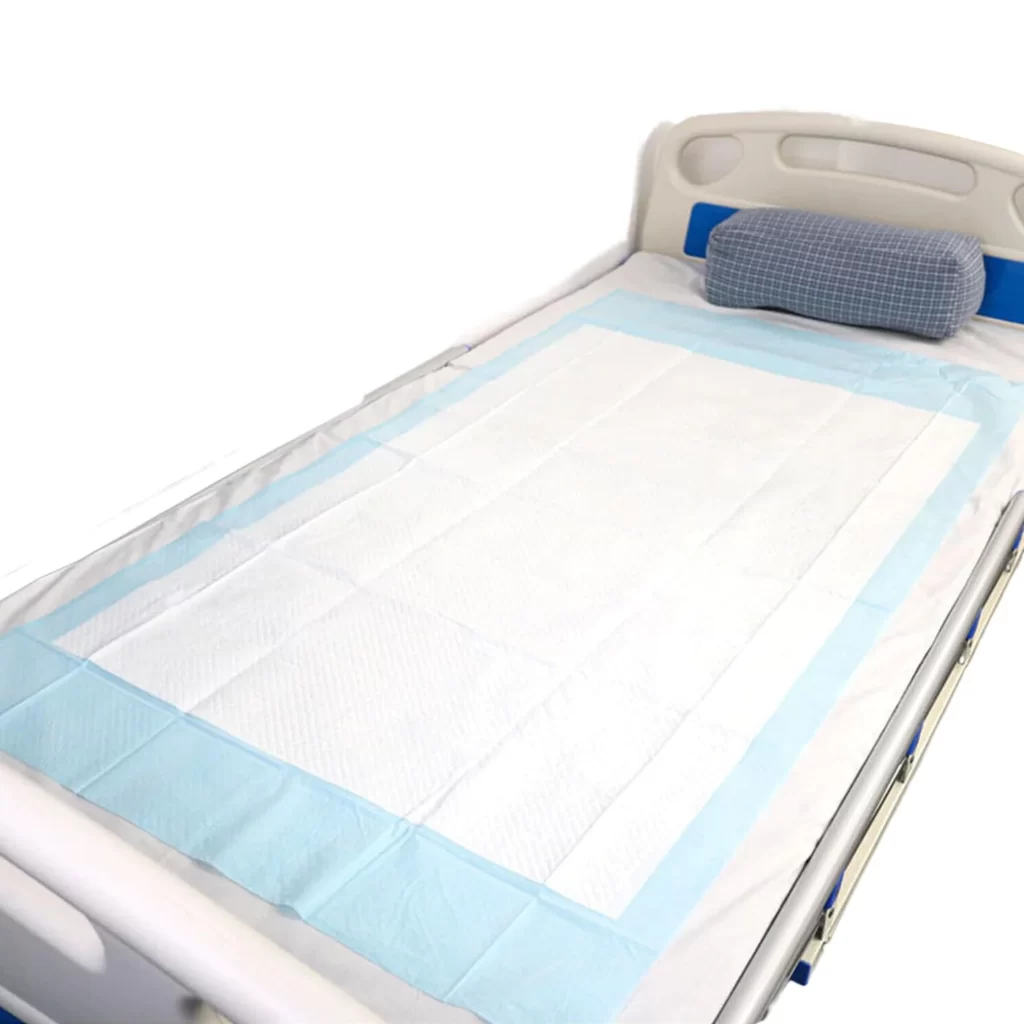1) Prepare and wash hands
- Wash your hands and put on gloves.
- Gather a disposable underpad, wipes, skin barrier cream, and a trash bag.
- Explain the step to the person. Lock the bed wheels and raise the bed to a safe height.
- This setup helps safe, clean incontinence care.
2) Check the pad and pick the right size
- Pick a disposable underpad that fits the task and the bed.
- Make sure the top sheet is soft and clean. Make sure the absorbent core is even.
- The white side up, blue side down rule helps: the soft top faces the skin; the leak‑proof backing faces the mattress.
- Check sealed edges and any adhesive strips. These help stop leaks and slips.
- If needed, choose a higher absorbency level for heavy wet.
3) Place the underpad with a safe roll
- Ask the person to bend the knee on the far side, or do a gentle log roll.
- Turn the person to the side. Keep the spine in line.
- Fold the underpad in half lengthwise. Slide the fold to the bed center.
- Place it so it runs from lower back to mid‑thigh, or under the hips where wet may pool.
- Unfold it flat. Keep the white top sheet up and the leak‑proof backing down.
4) Smooth and secure to prevent wrinkles
- Smooth the pad to remove wrinkles. Wrinkles can rub skin.
- Use adhesive strips if the pad has them. Press them to the sheet so the pad will not shift.
- Lightly tuck the sides under the mattress or draw sheet if needed, but do not over‑tuck.
- Keep sealed edges flat and clear of folds.
5) Use the pad and protect the skin
- During incontinence care, blot, do not rub. Keep the skin clean and dry.
- You can use a thin skin barrier cream on clean skin to help protect from moisture.
- Do not stack many pads. One pad works best and lets the absorbent core do its job.
- A quilted pad can spread liquid fast for better absorbency and odor control.
6) Change the pad when wet or soiled
- Change the disposable underpad after each bowel event or when more than half wet.
- If it smells, looks stained, or feels heavy, it is time to change it.
- Turn the person to the side again. Fold the top edge toward the center so the wet side faces in.
- Roll the pad from head to foot with the soiled side inside. Keep fluids away from skin and sheets.
7) Dispose and reset the bed
- Place the rolled pad in a lined trash. Follow local rules for waste with body fluids.
- Remove gloves and wash hands well.
- Wipe the mattress cover if damp. Let it dry. Then place a fresh underpad.
- Smooth the pad flat. Check comfort, absorbency level, and fit before you finish.












